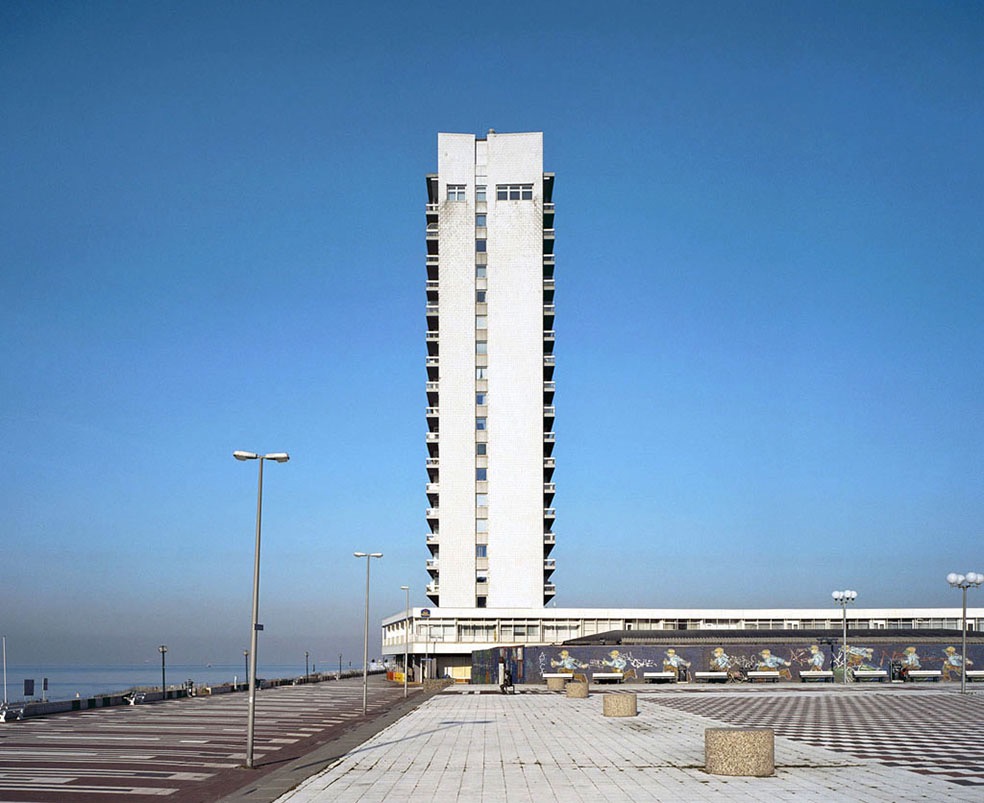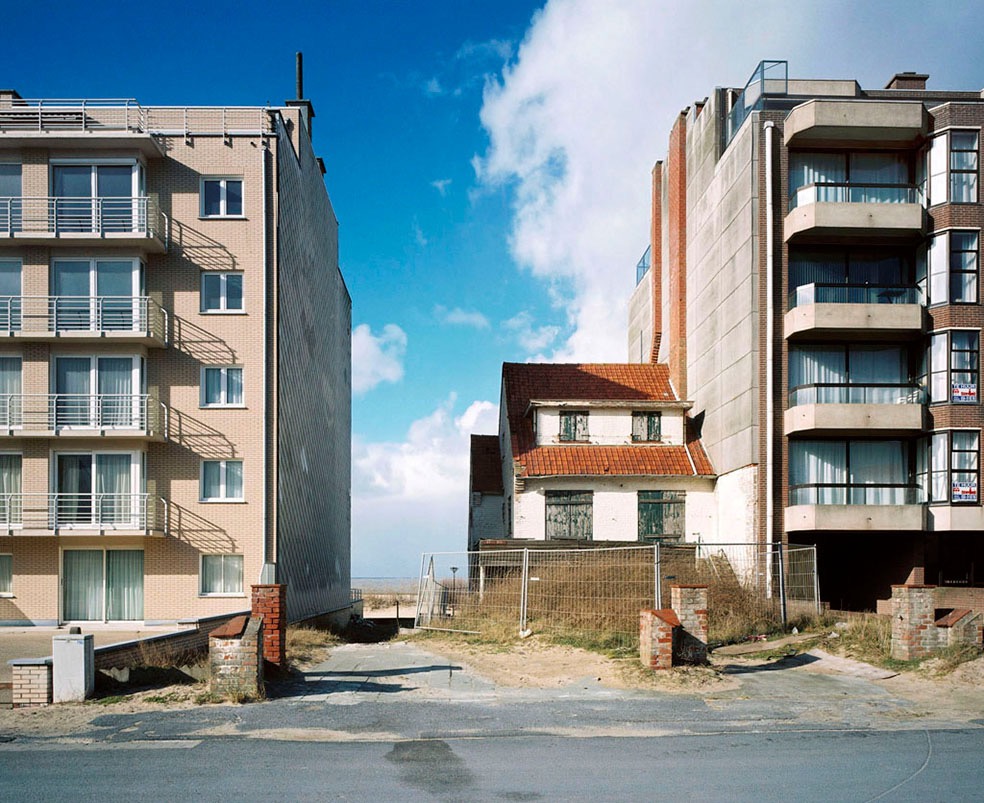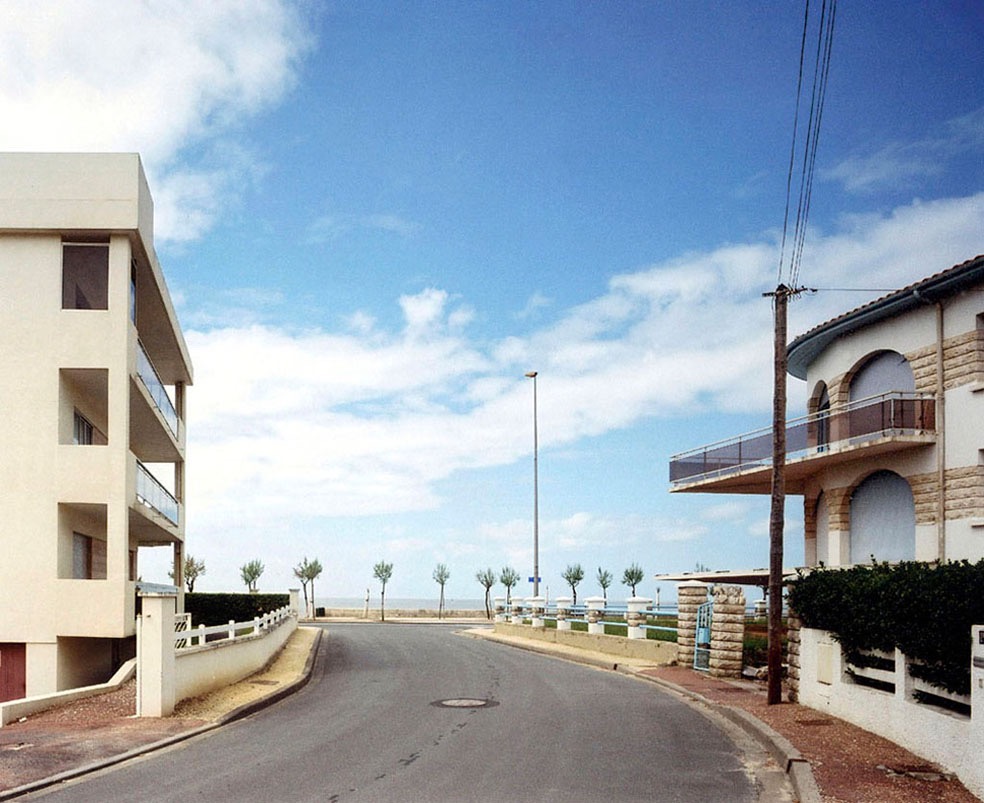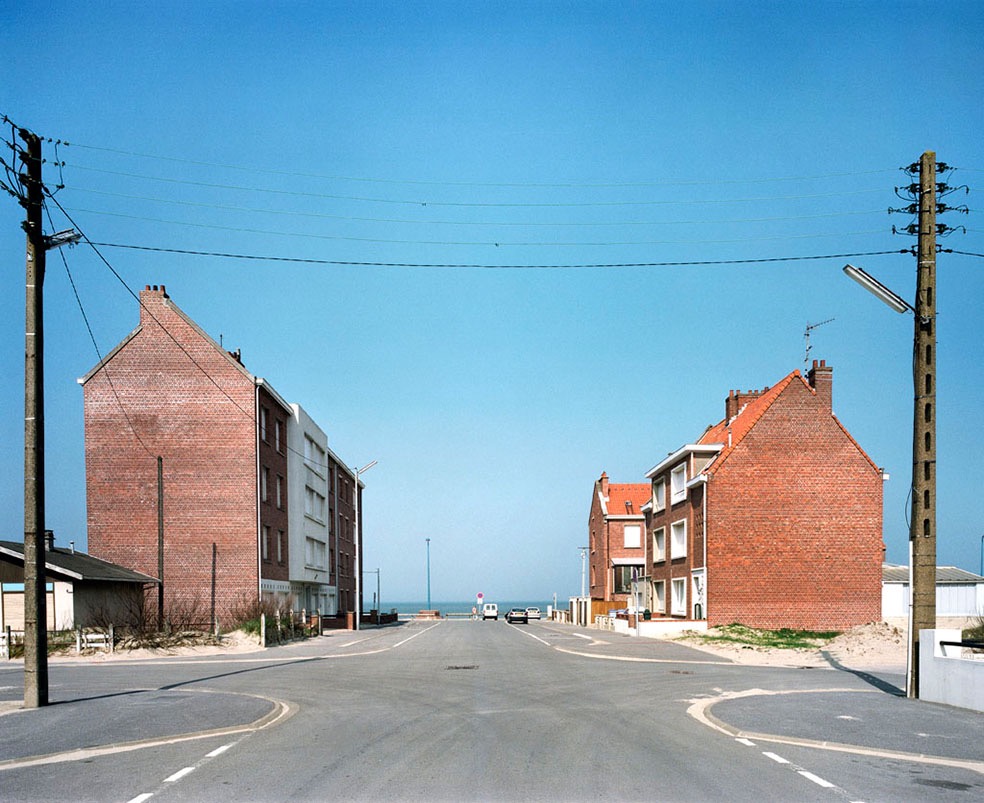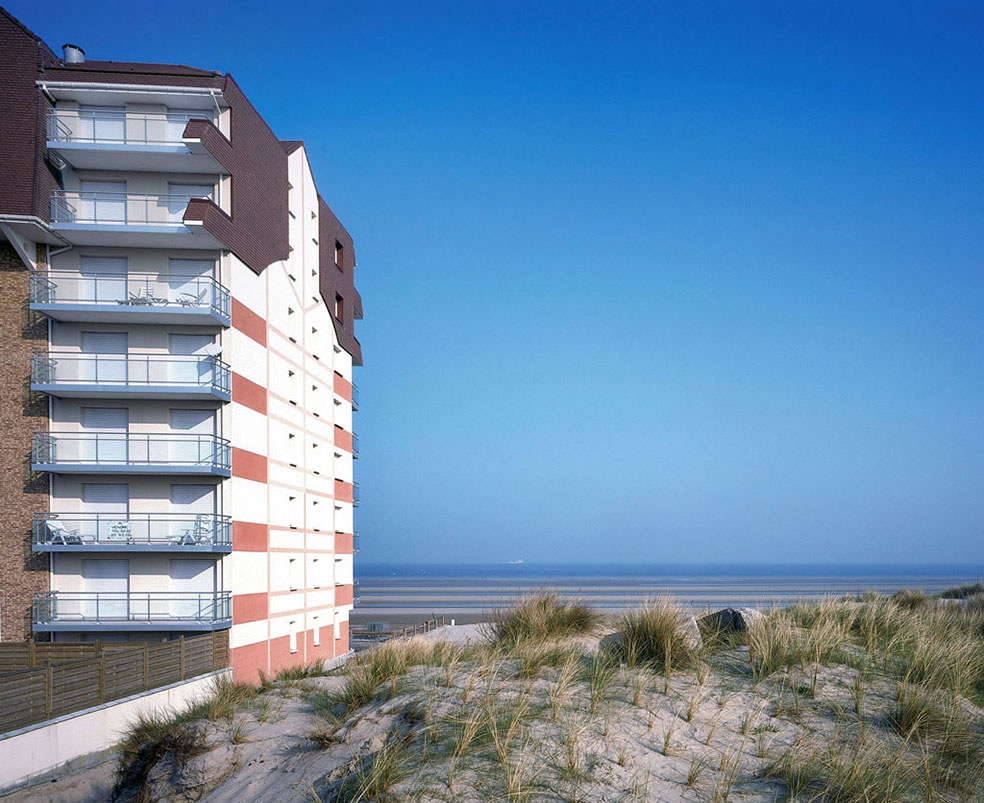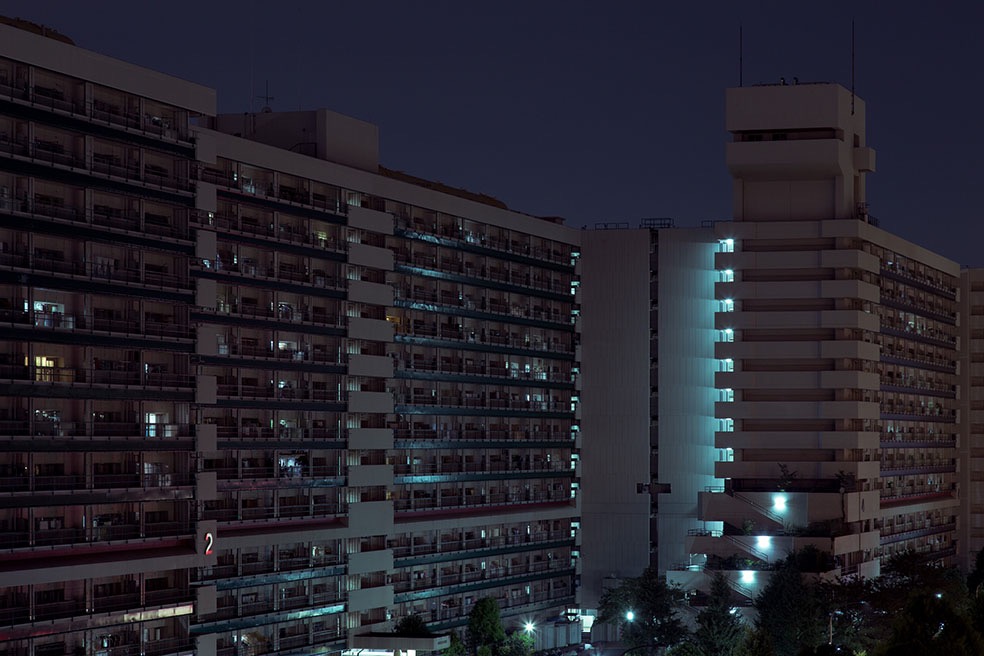Contrary to expectations and in spite of the varied architectural styles, the impression given by this habitat is that of uniformity and desolation. Beyond the striking visual effects of these pictures, this photographic work offers more than a sociological or ethnographic report. It encompasses a political dimension by revealing the absurdities of certain urban planning decisions.
These photographs bring time to a standstill so as to awaken our conscience and critical mind. As for nature, she would laugh at such considerations. Once the summer visitors have left, she seems to regain her mastery over the place, as if to mock the fragility of man’s constructions.

Patrick Tourneboeuf, born in 1966 in Paris. He portrays men by photographing the traces they leave behind them, the places they bring to life and, sometimes, abandon. Using a large-format camera, his method, resolutely artistic, systematic, recounts times past and present. The absence of an image reveals a human presence.
He started by working on the monumental aspect of the Paris “périphérique”, with a series that is both nocturnal and contemplative, as opposed to the more classic photographs of the well known circular belt.
In the year 2000, his next series entitled “Huis-clos” (Behind Closed Doors) was based on the everyday life of new recruits into the French Navy, at the Naval Instruction Centre of Querqueville. The same year, Patrick explored sea side resorts when completely out of season. This became the starting point of a series entitled “Nulle part” (Nowhere).
Next came “Cicatrice” (Scar), a documentary on the remnants of the Berlin Wall, and “À la mémoire du jour J” (In Memory of D-Day), depicts the beaches in Normandy where the Allies landed. Two facets of an art project that feeds a memory which tends to forget, also taking into account the alterring effect of time. Since 1999, he has been working on a photographic research project for the French Ministry of Culture, on several historic monuments: the Grand Palais, the Chateau de Versailles and the National Archives.
Website: tendancefloue.net


